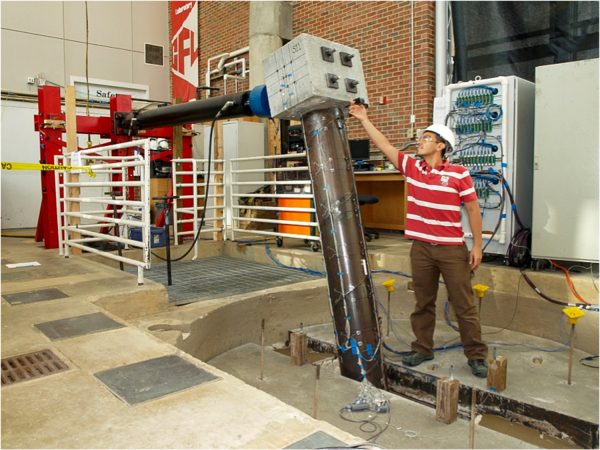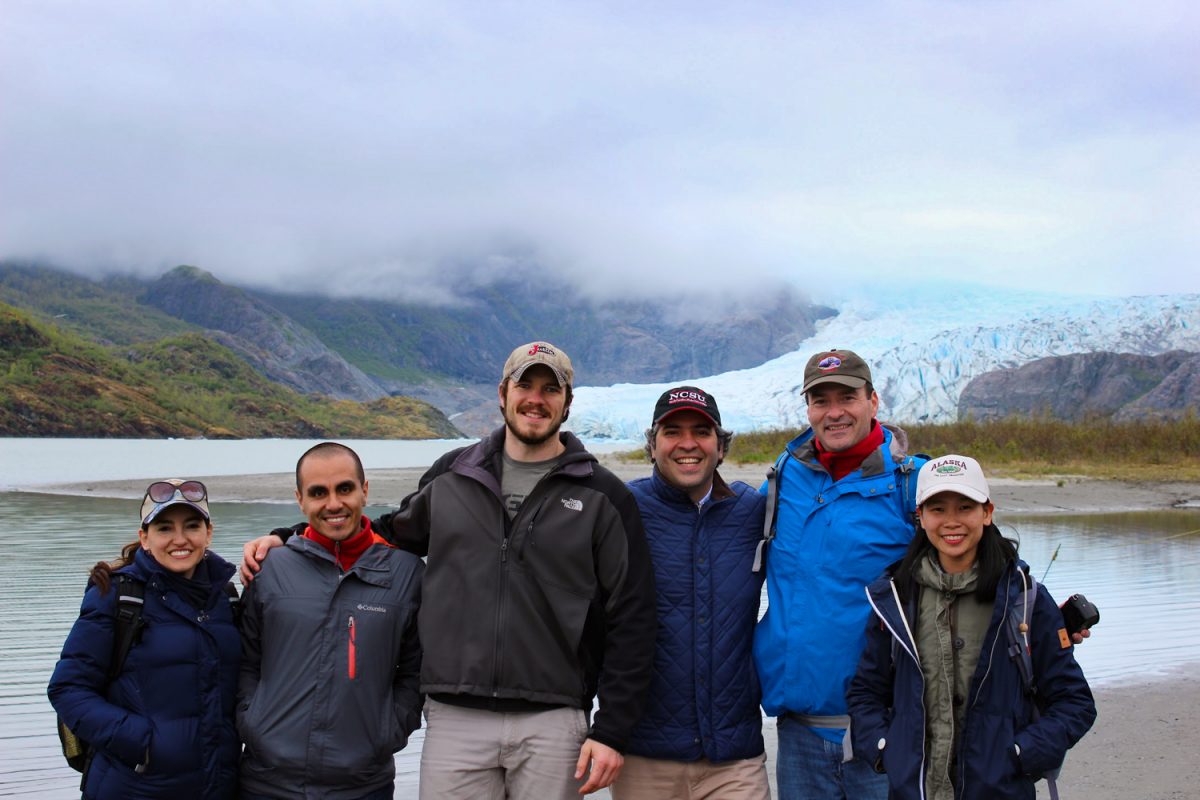In May, a group of CCEE researchers specializing in earthquake engineering traveled to Juneau, Alaska, to present a four-day workshop on seismic design of bridge structures.
The group, including 3 faculty, 1 post-doctorate researcher, and 7 Ph.D. students, presented findings from five research projects conducted for the Alaska Department of Transportation & Public Facilities (Alaska DOT&PF). In addition, the group discussed future research directions with Alaska DOT&PF.
“The main objective was to provide interaction with the Alaska DOT&PF engineers so they can successfully implement the results of our research,” said Dr. Mervyn Kowalsky, Professor of Structural Engineering in CCEE.
Alaska is the most earthquake prone area in our nation and experienced a 7.1 magnitude earthquake in January 2016. Though it was the most widely-felt earthquake in recent years, seismic events are common in the state, including 45 earthquakes with greater than 5 magnitude in 2016, and hundreds of smaller earthquakes throughout the year.
“There are some very remote areas where, if a bridge becomes impassable for a few days, it can have significant impact on people’s lives and the economy,” said Dr. Jim Nau. Along with Dr. Mohammad Pour-Ghaz, Nau presented findings regarding the durability of cement grout used in bridge construction. “Alaska’s climate presents specific stresses on grout with the cycle of freeze and thaw,” Pour-Ghaz said.

All seven students presented the results of their research. Ph.D. student Diego Aguirre gave a presentation on research aimed at better understanding the interaction between soil and reinforced concrete filled steel tube bridge columns. “They have a design standard for bridge columns that has a lot of advantages including increased capacity along with faster and cleaner construction processes,” Aguirre said. “However, there are limited design guidelines for such a system and our research is aimed at quantifying the effect of soil on parameters important for the seismic design of these systems.”
Ph.D. student Ana Haro relayed findings regarding the stability of reinforced concrete pier walls. Additionally, Haro, who is from Ecuador, shared insights from her reconnaissance trip to her homeland immediately following the devastating 7.8 magnitude earthquake that hit Ecuador’s coast in April 2016. She shared observations about damage to bridges and overpasses in Ecuador, as well as insights about soil-induced effects of the earthquake.
Ph.D. student Cuiyan Kong shared results of research aimed at developing a rapid assessment approach for engineers to quickly determine which bridges are the most vulnerable following a seismic event. The approach is based on earthquake magnitude, distance from the event, and the geometry of the bridge.
Other students also had the opportunity to present updates of ongoing research including Emrah Tasdemir, Zachary Krish, Christopher Price, and Leo Barcley. Students will have additional opportunities to visit Alaska as their research reaches a stage where results can be applied in Alaska.
CCEE researchers have a longstanding relationship with the Alaska DOT&PF. From a small project conducted in 2003 on the effects of low temperatures on the seismic behavior of bridge columns, the structural engineering group has developed a number of research projects to assist Alaska DOT&PF. A total of 23 graduate students from NC State have earned, or are earning, M.S. or Ph.D. degrees on research supported by Alaska DOT&PF. “The combination of our technical staff and equipment at the Constructed Facilities Lab, including a large environmental chamber in which we can conduct tests at temperatures as low as negative 40 degrees, means we have a unique advantage for this type of research. We also have a good track record of producing meaningful results,” Kowalsky said.
“The Alaska DOT&PF has been very pleased with the high quality research offered by the North Carolina State University team of researchers,” Elmer Marx of the Alaska DOT&PF said. “They have been a great resource to Alaska DOT&PF engineers, providing training and assistance on a variety of seismic topics. The collaborative relationship between the Alaska DOT&PF and NCSU has proven to be a great model.”
Because of the long daylight hours at the time of year the group traveled, there was plenty of time for climbing mountains and walking on glaciers after their daily presentations.


